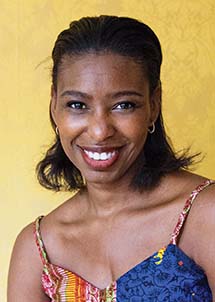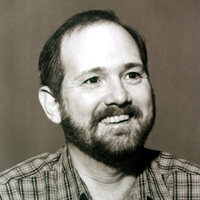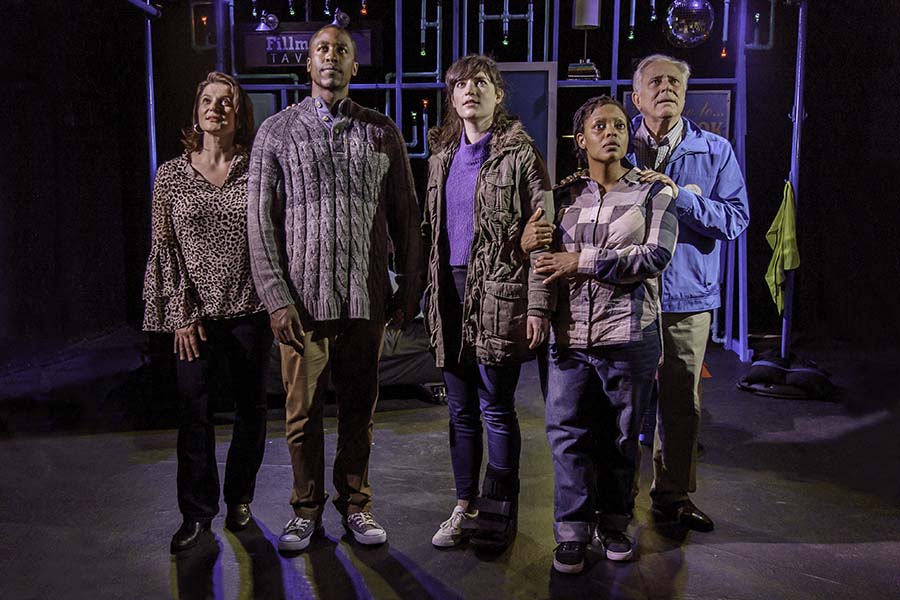How many electricians does it take to install track lighting? Only two, according to Adam Kraar’s new play Alternating Currents, but they’re far from the only Local 3 members on the block. For as the play’s newlywed interracial couple, Elena and Luke, discover, there are many unsettling contradictions beneath the community of Electchester’s utopian facade, and they require far more refurbishment than a mere change in lighting fixtures.
Alternating Currents, which opened April 26 at the IBEW Local 3 in Flushing, Queens, and is now running through May 20 at Urban Stages in Manhattan—is the latest installment of Working Theater’s Five Boroughs/One City Initiative, which in 2014 tasked five teams of writers, directors, and installation artists with creating plays rooted in each of the five NYC boroughs. True to the project’s name, the play will also appear at the Bronx Museum of the Arts on May 16, the Snug Harbor Cultural Center in Staten Island (May 22-24), and at the RiseBoro Youth Center in Bushwick, Brooklyn on May 26.
“That venue in Queens will be absolutely sold out,” Tamilla Woodard, the Five Boroughs/One City artistic director, predicted before opening. “We did a workshop of it in Queens two years ago and people were at the door trying to get in; we had 99 seats and we squeezed in 24 more. Enormous enthusiasm—that’s been the reception so far.”
To undertake this tremendous project, the playwrights were asked to immerse themselves in the communities they would depict onstage, the better to understand the experiences of the residents, before they began writing.

“We’re asking [the playwrights] to delay that process and just get fed by the community they were in and allow things to just kind of marinate a little bit,” said Woodard. “How do we illuminate the stories of individuals who make their home in neighborhoods in boroughs, who have things that they dream of, things that they hope for, things that they’re afraid of, things that they keep secret, and things that they want the whole rest of the community to know about them?”
Kraar’s interactions with the residents of Electchester, a neighborhood of apartments created for electrical union members, and residents of the nearby housing project, Pomonok, revealed all the depth that Woodard described. Said Kraar, “We felt the responsibility to write something that they could feel proud of but that would also be truthful about the complexity of this neighborhood.”
Kraar was initially dubious when he was assigned to write about a community in Queens, rather than home community of Brooklyn. “Like most people I’ve talked to since, I’d never heard of this place,” Kraar said. “But as soon as I got to Electchester the first time and realized what it was—how unique it was, how special it was—I realized I was perhaps the luckiest of the five commissioned playwrights.”
But much like his characters Elena and Luke, the deeper Kraar’s interactions with the community became, the more diversity and contradiction he saw in the opinions and values of the residents.

“[Electchester] reveals things about some of the contradictions in Americans’ attitudes about race and class and labor unions in a really complex and surprising way,” said Kraar. “There are some disturbing attitudes about race and class in this community, but they’re coupled in many cases with an idealism about helping people, so that’s part of what’s disturbing about it: Some of the people who have attitudes that are in some ways intolerant are also incredibly welcoming.”
This multiplicity of voices Kraar shines through in Alternating Currents, which, with only six actors but an entire community’s worth of characters, fills Urban Stages’ intimate blackbox with a nuanced portrait of Electchester. Sweet and funny interactions as the couple are welcomed to the neighborhood are tempered with sobering confrontations about who really belongs in the union-centric utopia toward which the neighborhood strives.
Rather than taking sides in the larger issues of race, inclusion, and community efficacy, the play literally asks the audience, “What does community mean to you?” (the phrase is handed out to audience members on blank cards as they enter the theatre). The post-show discussion on a recent night I attended catalyzed its own community among the audience, inviting us to converse with our neighbors and then share with the group about our own experiences with inclusion and exclusion among our communities.
Woodard believes the 5 Boroughs/One City initiative can serve as a model of community engagement for theatres outside of NYC.
“I think the incentive to create inside and with a community and to commit yourself to good art-making is part of the zeitgeist now,” she said. “Because you’re creating in a community does not mean that it’s sub-par art; you still make good art. You’ve got to put the resources there and the time—it’s not something that happens quickly.”
After all, it’s taken 69 years since its establishment for Electchester to develop into the multifaceted community it is today. It’s only fitting that Alternating Currents took its time to marinate before the elaborate world of Electchester could finally light up the stage.


